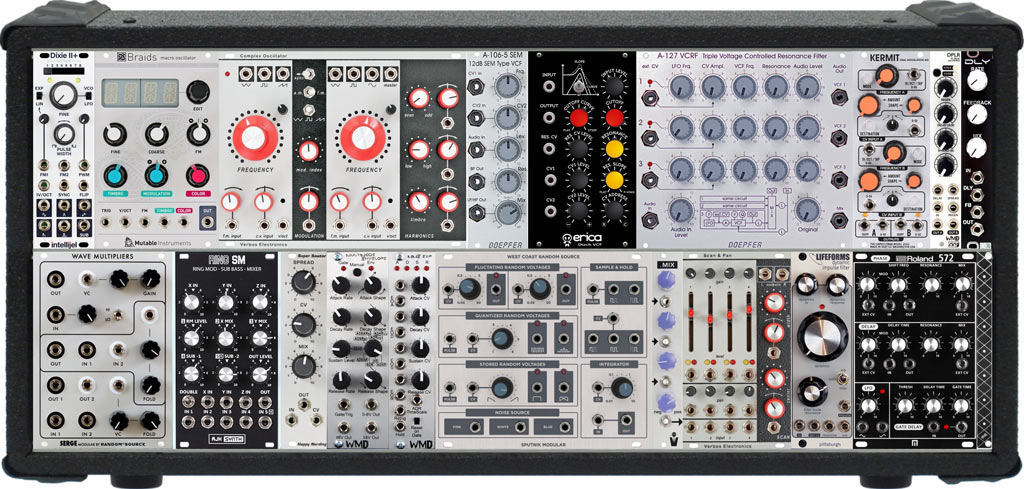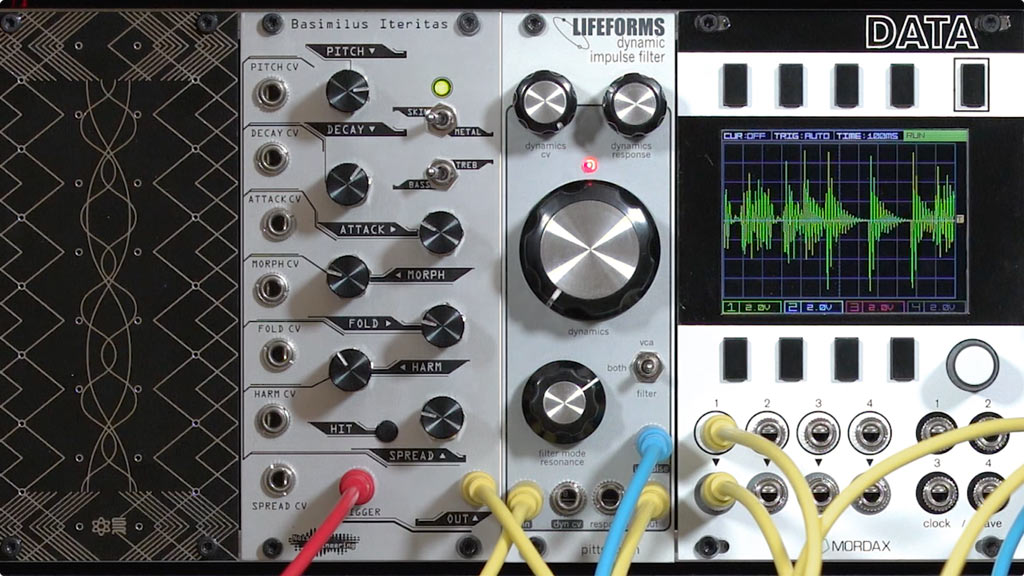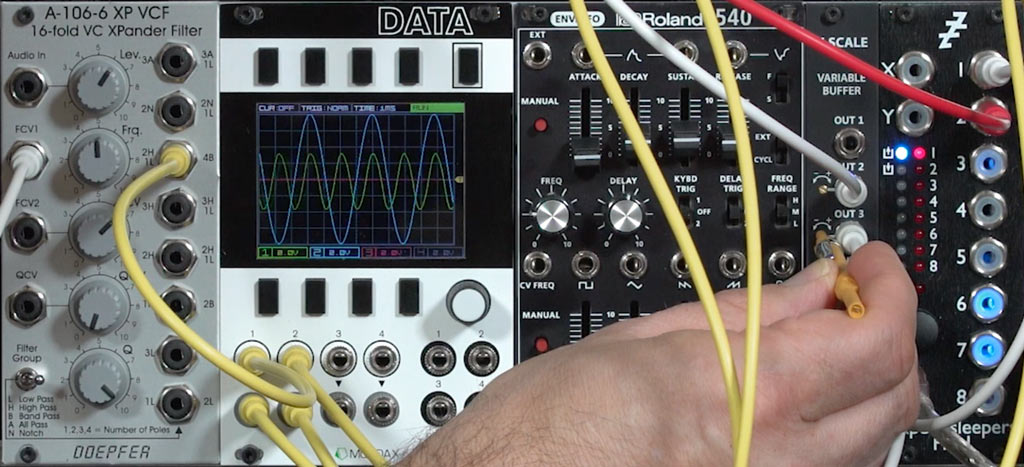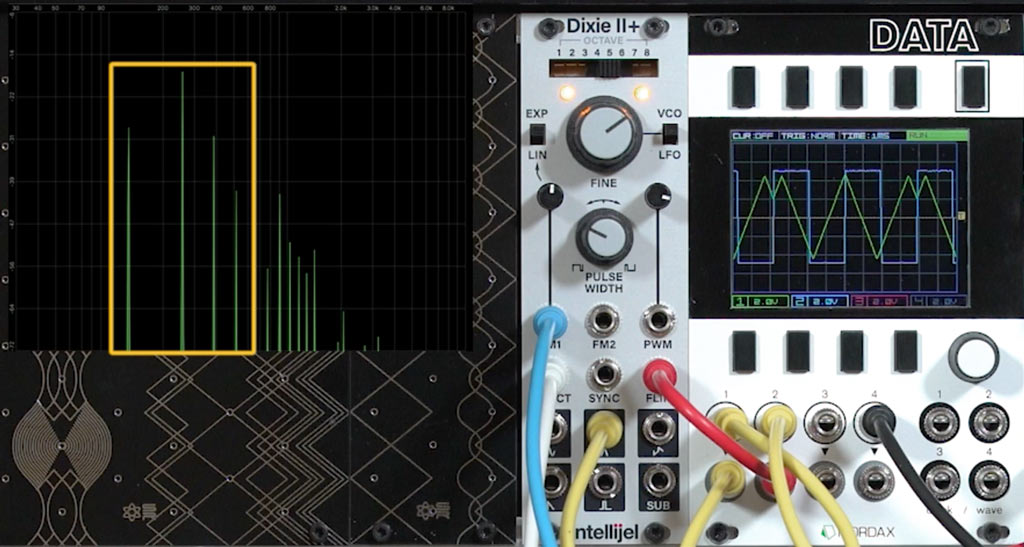Below are all of the blog posts I’ve created for the Learning Modular site. The include instructional videos and articles on important concepts (such as getting started, managing clocks in your modular system, how the different types of FM work, etc.) as well as trade show reports and other writings of interest. To browse a specific category, click on one of the Blog Categories at right.

The Eurorack Expansion Project
I created the original Learning Modular Synthesis course for those who were complete beginners to the world of modular synthesis. The next question became: How do I help users reach the next level? The answer is the Eurorack Expansion Project. The idea is you have a nice core system, and want to know how to intelligently expand it – particularly if you interested in a specific technique or are after a certain sound. I’m tackling this in two parts: an online course, and a weekly series – including a dedicated Patreon page for the hard-core users out there.

AJH Synth Ring SM: Ring Modulator Section (LMS Eurorack Expansion Preview)
The AJH Synth Ring SM is three modules in one: a ring modulator based on an analog transistor core design, a sub bass generator that creates tones 1 and 2 octaves down, and a 5 input mixer based on the classic Moog CP-3 design. This mixer is used to combine the original inputs, ring modular, and sub bass sounds; you can override them by patching in alternate inputs. The bonus preview movie from the soon-to-be-released Eurorack Expansion course focuses on the ring modulator section, showing a few different applications as well as really focusing on the waveforms and harmonic spectra it creates so that you better understand how a ring modulator works:

Sputnik Modular: West Coast Random Source (LMS Eurorack Expansion Preview)
The Sputnik Modular West Coast Random Source is a very capable Eurorack-format update on the classic Buchla Source of Uncertainty module. In this movie, I focus first on uses for those 1:2 switches, including using them to send alternating note-on gate or triggers to alternating drum sounds. Then I move on to showing the sample and hold itself, first with the typical “science fiction soundtrack” random pitch technique, and then for something more subtle such as randomly changing the pulse width.

Lifeforms Dynamic Impulse Filter: Processing Percussion (LMS Eurorack Expansion Preview)
A favorite “West Coast” module that synthesists of all tastes should check out is the LPG: the low-pass gate, which acts like a VCA but with a filter element that also dampens the high frequencies. A new “hybrid” application I’ve found LPGs to be useful for is to process the output of dedicated percussion modules. An LPG naturally damps both the amplitude and harmonics of the input to mold most sounds into a typical percussive shape, freeing you up to dial in the initial noise and harmonic mix you like without worrying about the original sound ringing out too long or taking up too much room frequency-wise in a mix.

Erica Dtech VCF: Exploring Instability (LMS Eurorack Expansion Preview)
You hear many users search for an “extreme” filter to add to their system, looking for one that is unstable when pushed, screams when provoked, and otherwise makes their instrument more aggressive, less predictable, and in general fun to play with (if you’re the type of person who likes to play with knives). Filters based on the Vladimir Kuzmin’s design in the Russian Polivoks synthesizer fit this description. My favorite variation of the classic Polivoks design in the Erica Dtech VCF, which extends the original design. In this video, I explore how to push the Dtech filter into unstable, aggressive territory

Random*Source Serge Wave Multipliers: Wave Folding (LMS Eurorack Expansion Preview)
This module – a recreation of the classic Serge Wave Multipliers (VCM) module from the early 80s, adapted partially to the Eurorack format – contains a nicely-rounded, tube-like clipping or saturation; a wave folder that emphasized the odd-numbered harmonics; and a three-stage full wave rectifier that emphasizes the even harmonics. The video in this article focuses on the wave shaping section, and compares its analog sound to the digital one included in the Expert Sleepers Disting; I also discuss matching Eurorack levels to work with Serge-inspired modules.

Improving Intonation using the AJH Synth V-Scale
One of the potential challenges of using a modular synth is keeping multiple VCOs in tune with each other as well as external instruments as you play up and down a scale. Most VCOs have trim controls to improve their tracking, but they can occasionally be frustrating to use: They may require you to remove the module from the case to access them, or the manufacturer might have not have used high-precision multi-turn potentiometers for the trimming controls. Therefore, I’ve added several AJH Synth V-Scale Variable Precision Buffers to my modular cases, and have been happier for it. What sets it apart is that 4 of its 5 outputs have high-precision trimmers accessible from the front panel, allowing you to improve the tracking of connected modules like VCOs and resonating filters.

Verbos Complex Oscillator: Frequency Modulation (LMS Eurorack Expansion Preview)
The Verbos Complex Oscillator is an interesting interpretation of the classic Buchla “complex oscillator” pair where one modulates the other. It too has two oscillators with internal wiring and options so the modulation oscillator on the left can amplitude or...

Intellijel Dixie II+ Sync & Flip (LMS Eurorack Expansion Preview)
A nice option for an analog VCO to add to your system is the Intellijel Dixie II+: it’s small, has excellent tracking, supports linear and exponential FM as well as PWM and hard sync, and has six different waveforms. In this movie, I demonstrate creating a hard sync patch with the Dixie II+. For those who wonder exactly what’s going on when you use sync, I focus heavily on what’s happening with the waveform output. I also look at the Dixie II+’s unique Flip function.

Verbos Scan & Pan: Waveform Scanning (LMS Eurorack Expansion Preview)
There are a lot of voltage-controlled stereo mixers; perhaps lost in the shuffle is the Verbos Scan & Pan. It features four input channels with both voltage and manual control of level and panning per channel, as well as manual control of a huge amount of input gain. In this video, I demonstrate using the Scan portion of this mixer to combine the different waveforms available from an Intellijel Dixie II+, including its sub-octave output plus its sine wave that is saturated by the Verbos. I particularly have fun using an envelope to articulate that mix per note.
